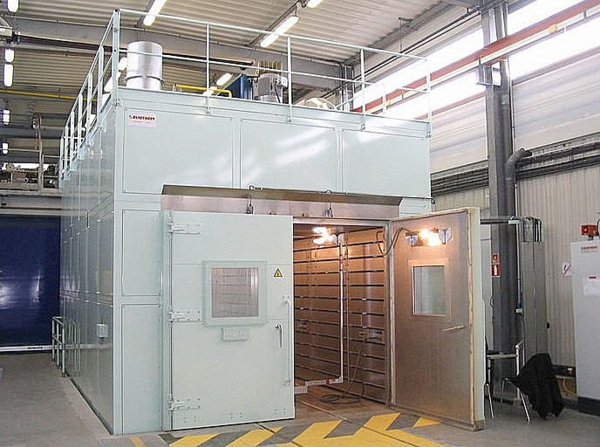
The last stage of a product’s manufacturing procedure is the curing process. A curing oven is used to increase the product’s mass and coated material to a certain temperature while holding this set temperature for a required amount of time. This stabilises the chemical compounds contained within the product and its coating. The application of sustained temperature is required to for set amounts of time for different processes and size/number of products to be cured. Time taken will also depend on the type of oven being used i.e. large scale industrial ovens will need less time to complete such tasks and have the potential to cure multiple products at once.
Some product’s chemical structures trap liquids which necessitates zoned ovens. If the exhaust of the oven is insufficient to cope with the fumes released during curing, it can potentially effect the curing of products in a negative manner, also impacting the final appearance of the product. For instance, the capability of the exhaust and nature of heat source can affect the colour of the product. Poorly structured exhaust and gas-fired ovens usually result in the product coating to darken or turn yellow. The variation of colour drift differs for each product type. To minimise this occurrence, before being inserted into the oven, it is recommended that products are cleaned, rinsed, dried and then coated with a multi-lane conveyor dryer.
The duration of time for curing is suggested by the coating providers as they will know their product best. They will recommend a set time and application of certain temperatures in order to thoroughly cure the coated product. There are also other factors which need to be considered, including line size and speed, and also the window period for the particular product. These factors need to be taken into account before any curing process is initiated.
A common contributing element of oven problems is issues concerning any of the enclosures’ openings and also the entrance and exit locations for the products. Bottom entry and exit oven designs are beneficial in using the natural rising attributes of hot air to retain encasement. Side-opening ovens however, require mechanically operated air seals to sustain temperatures within the environment.
There are many industrial ovens available, which makes it a necessity to fully research your product and specify your requirements for all processes to be actioned. With this carried out to the appropriate extent, a hassle-free approach can be made toward your manufacturing strategies.
By Sam Hurley (Junior Digital Marketing Consultant at FDC)










Comments